TL;DR
Saddle stitch and staple binding are affordable, quick, and flat-opening options, best for brochures, programs, newsletters, and slim booklets.
Perfect binding creates a professional, square-edged look that works well for paperbacks, catalogs, product guides, and annual reports.
Spiral binding uses a flexible plastic coil for full rotation and durability, making it ideal for cookbooks, training manuals, and workbooks.
Wire-O binding offers a sleek metal finish with 360-degree rotation, perfect for reports, proposals, and high-end catalogs.
Hardcover or case binding delivers a premium and long-lasting finish, commonly chosen for textbooks, yearbooks, photo books, and collector editions.
Ex Why Zed brings every binding style together with customisation, expert support, and reliable delivery, ensuring your project is both polished and memorable.
Ever picked up a book or brochure and thought, “Wow, this feels professional”? Chances are, the magic wasn’t just in the design or content, it was in the binding. Binding might seem like a small detail, but it’s what holds your project together and shapes the final impression.
Understanding the different types of book binding helps you pick the right finish for your print project, whether it’s a brochure, journal, or keepsake book.
In this blog, we’ll walk through the types of book binding available and explain when each one works best, so you can choose the right option for your project.
What are the most common types of book binding, and how do they differ from each other?
So, there are many types of book binding, each offering different levels of durability, cost, and appearance. Some types of binding for brochures keep things simple and affordable, while others, like types of journal binding or school and library binding, are built to last.
Let’s take a look at the most common types of book binding:

If you’ve ever picked up a school program, a church bulletin, or a simple brochure, chances are you’ve held a saddle-stitched booklet in your hands.
Saddle stitch is one of the most common types of booklet binding. As a simple fold-and-staple method, it’s quick, affordable, and practical for slim documents. Also, when compared to the different types of book binding stitches, it's considered one of the oldest binding methods.
What makes it so popular is the balance of simplicity, speed, and cost-effectiveness. Printers love it because it’s quick to produce, and readers love it because these booklets open almost completely flat. That means they’re easy to flip through, reference, or even write on without fighting against stiff pages.
Where it works best: event programs, brochures, newsletters, catalogs, and slim workbooks.
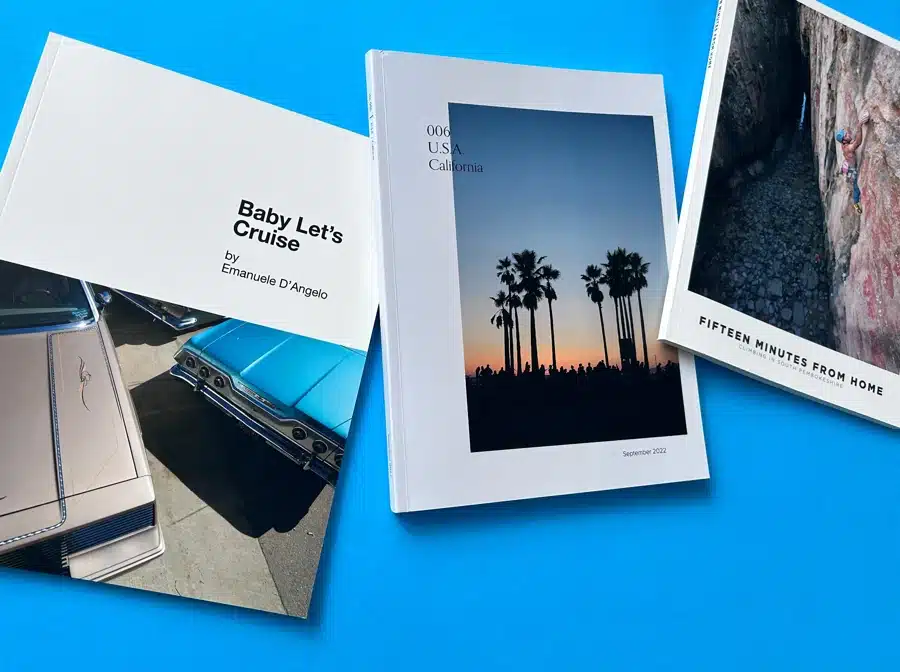
Think of your favourite paperback novel or glossy magazine, that’s perfect binding. Among the types of perfect binding, the square spine stands out as pages are glued and wrapped with a cover, creating a clean, polished look that feels like a real book.
Perfect binding is ideal when you want your project to look professional and last longer than a simple booklet. The glued spine allows for higher page counts, though it doesn’t open quite as flat as saddle stitch.
When asking what types of books should be used for binding, paperbacks and catalogs are ideal candidates for perfect bound projects.
Where it works best: paperback books, catalogs, annual reports, product guides, and magazines.
Ready to give your project a polished, professional finish? Get a Quote for Perfect Binding today.
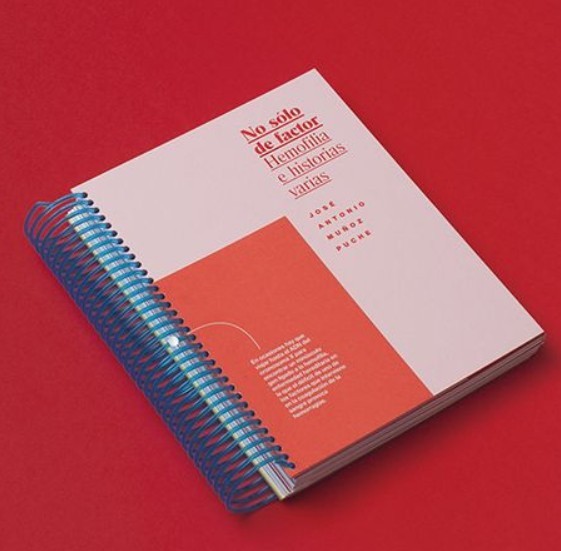
Also known as coil binding, spiral binding is a practical and versatile choice for many types of documents. This binding process involves punching a series of small, evenly spaced holes along the edge of the pages and threading a durable plastic coil through them.
This continuous spiral coil allows the book to open a full 360 degrees and lay completely flat, making it one of the most practical types of binding for printing.
Compared to wire binding, the plastic coil is more flexible and resistant to bending or distortion, making it perfect for documents that will be flipped through often. It also comes in a variety of colors, giving you the chance to match or complement your book cover design.
For more details on how different cover styles work, check out this binding styles for photo book printing guide
Where it works best: cookbooks, instructional manuals, training workbooks, and presentations.
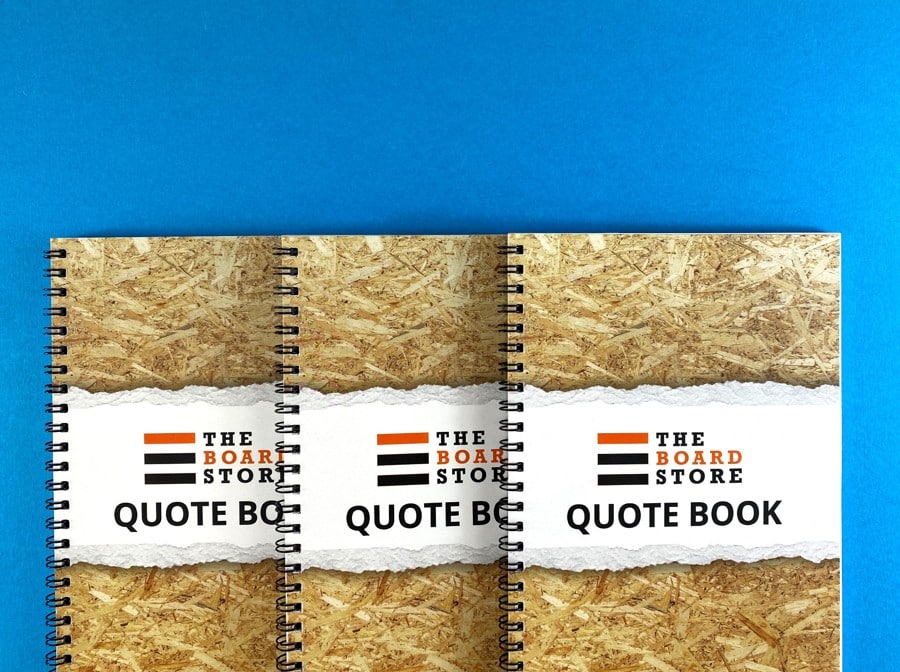
For a more polished and professional presentation, wire binding is a popular choice. Also known as twin-loop or double-loop binding, this method uses a series of metal wire loops inserted into punched holes.
Unlike the single continuous coil of spiral binding, the individual wire loops create a refined, upscale look that works especially well for formal documents. This makes it one of the preferred choices among the various types of binding documents.
Wire-O binding combines style and functionality. Like spiral binding, it allows pages to lay completely flat and rotate 360 degrees, making it easy to read, write, or display. The metal spine is sturdy, durable, and available in a variety of colors to match your design or branding.
Where it works best: annual reports, client proposals, professional presentations, and high-end catalogs.
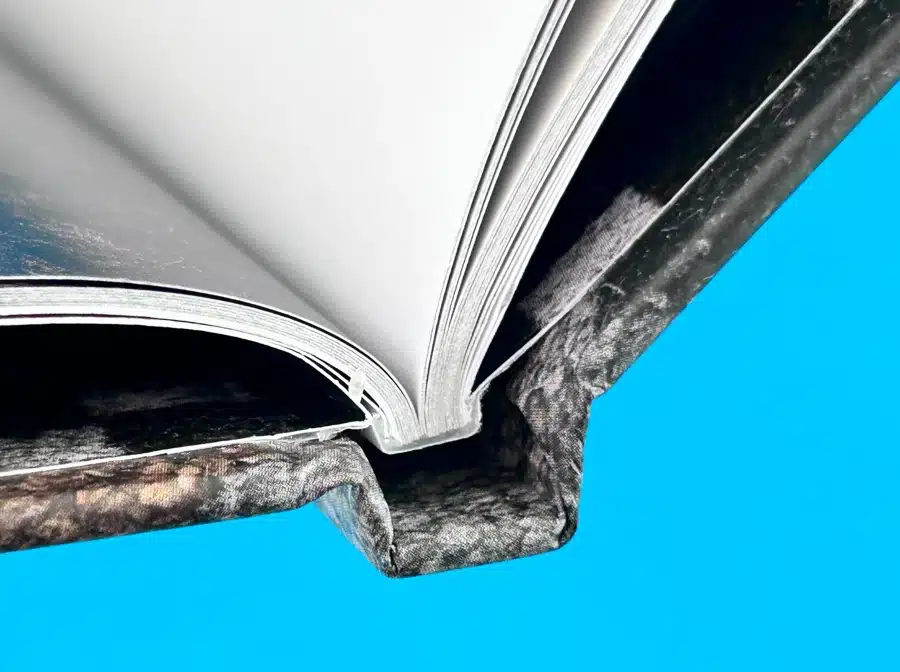
If you want your project to feel premium and built to last, hardcover binding is the way to go. Also called case binding, it’s the most durable and high-end option out there. The pages are either sewn or glued together, then attached to a sturdy cover made from heavy chipboard. That cover can be wrapped in cloth, leather, or even a custom-printed design to really stand out.
Hardcover books don’t just look impressive, they’re made to survive years of use. That’s why you’ll find them in textbooks, yearbooks, coffee table books, photo albums, and special edition novels. The rigid spine keeps everything secure, and the weighty feel instantly communicates quality.
Where it works best: textbooks, yearbooks, coffee table books, photo books, and special edition novels.
If you’re deciding between perfect bound and hardback, here’s a quick video guide to help you choose.
Now, you might be thinking how can I choose the best binding method for my specific print project or publication? With so many binding options available, it can be overwhelming.
But the best choice usually depends on your project’s purpose and requirements. So, before you decide, keep these factors in mind:
The first factor to consider when choosing a binding method is budget. If you’re working with limited funds, methods like saddle stitching are highly cost-effective and perfect for smaller projects such as brochures or pamphlets.
At the other end of the spectrum, perfect binding and hardcover binding come with higher costs but deliver durability and a professional finish that can justify the investment.
Options like spiral or wire-O binding fall in the middle, offering a good balance between affordability and longevity. The key is to align the perfect choice of binding with both your budget and production volume so you get the best quality for your spend.
The design and aesthetic of your booklet can significantly influence your choice of binding:
The number of pages in your booklet plays a big role in deciding the right binding method. For smaller projects of up to about 64 pages, saddle stitch or loop stitch binding work well and keep things simple. When you’re dealing with a higher page count, options like perfect binding, spiral, or wire-O binding are usually better suited.
If your booklet is especially thick and you want it to have a premium feel, hardcover binding is the best choice. Keep in mind that some methods, such as saddle stitch, require the total page count to be a multiple of four because of the fold-and-staple process. Always choose your binding method with the size and volume of your content in mind.
The intended use of the booklet forms a key determinant:
The size of your print run also matters when it comes to selecting a binding method. Saddle stitching or loop stitch binding may be more economical if you need to quickly produce a large volume of booklets.
Printing methods like perfect bound, spiral, or wire-O are better suited for smaller or medium-sized runs where the cost per unit can be better justified for the added durability and aesthetic appeal. Hardcover binding is often reserved for more select, high-value print runs.
The right binding gives your work a professional finish, and at Ex Why Zed, we make sure it’s done right. From budget-friendly booklets to premium hardcovers, our range of options ensures your project looks polished and lasts.
Clients often ask, “what are some techniques for bookbinding?”, and we’re here to walk you through them, from saddle stitch to hardcover, so you always pick the perfect fit.
What Sets Us Apart?
At Ex Why Zed, we don’t just bind your pages, we bring your ideas to life.
Let’s create something extraordinary together. Contact Us Today
Think about the last time you picked up a book or brochure that just felt right in your hands. Chances are, the binding played a bigger role than you realized. It’s the detail that turns pages into a product people want to flip through, use, and keep.
The truth is, the right binding does more than hold your content together, it shapes the entire experience. It can make a simple handout feel polished, a manual feel practical, or a book feel like a keepsake.
So when you plan your next project, don’t treat binding as an afterthought. Treat it as the finishing touch that takes your work from good to unforgettable.
For durability and heavy use, sewn binding and hardcover binding are the best options. These methods create strong, long-lasting bound books that can withstand repeated handling while maintaining a professional look, making them ideal for textbooks and library editions.
Wire binding, including Wire-O binding and comb binding, is excellent for professional presentations and annual reports. These methods allow the document to lay flat for easy viewing and have a flexible spine, providing a clean, organized, and functional appearance.
The type of binding directly affects whether you can print on the spine. Methods like saddle stitch, spiral, or comb binding don’t create a flat spine, so printing isn’t possible. Perfect binding and hardcover binding, however, produce a square spine where titles or designs can be added. The thickness of the book, determined by page count and paper weight, influences how much text or artwork will fit. This makes spine printing ideal for larger, more substantial publications.
School and library binding is built for heavy use, with reinforced sewing, stronger covers, and long-lasting durability. Regular book binding is usually more focused on appearance and affordability, making it ideal for personal collections or retail but less durable for constant handling.
Choosing the right magazine size can make or break your publication’s appeal. The dimensions you select influence not only the visual impact but also the functionality, cost, and overall reader experience. Thus, the size of your magazine is a key part of its identity—it influences how your content is presented and perceived.
Your chosen dimensions, whether compact or large, play a key role in engaging your audience and shaping the reading experience. Different sizes have distinct advantages, shaping your publication's design and experience.
In this blog, we’ll examine the standard magazine dimensions, offering insights into what works best for various types of content. We’ll also explore how choosing the right size can elevate your magazine and make it stand out on the shelf.
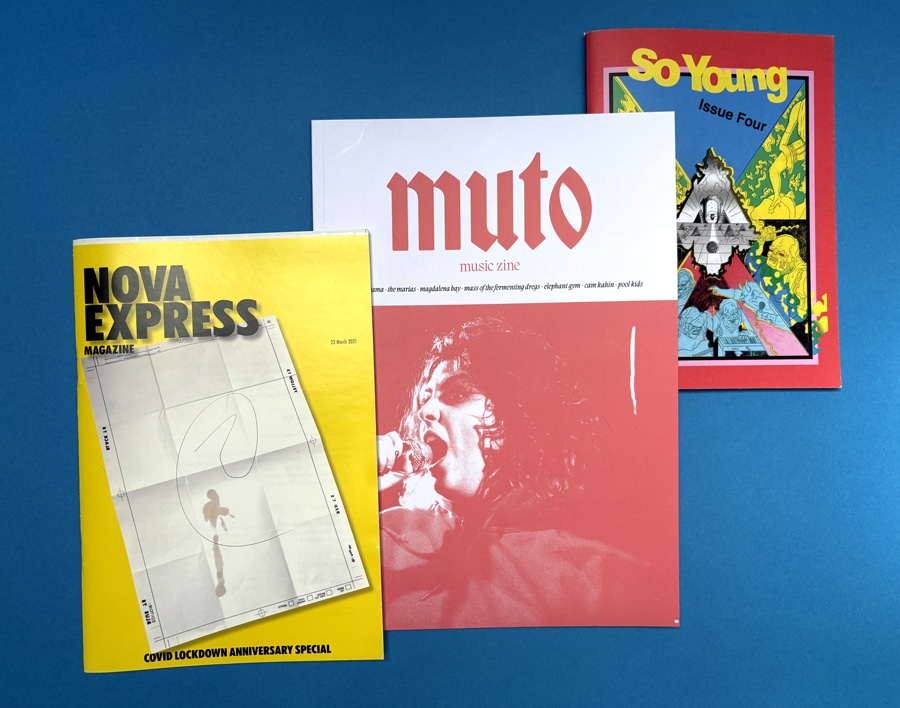
Magazine sizes vary based on geography, audience preferences, and content type. Smaller formats are more portable, while larger ones provide ample space for detailed visuals and text. There are common US dimensions, European dimensions, and custom dimension options available in the market.
The typical magazine size in the United States is a letter size, measuring 8.5 by 11 inches. However, other common US magazine dimensions are also gaining popularity due to their unique advantages. Check out the table below to see the most common US Magazine dimensions:
Portrait | Landscape | Square |
3.5" x 8.5" | 6" x 4" | 5.5" x 5.5" |
4" x 6" | 8.5" x 5.5" | 8.5" x 8.5" |
4.25" x 11" | 11" x 8.5" | |
5.5" x 8.5" | ||
6" x 9" | ||
8.5" x 11" |
Like in the US, European publishers use a range of sizes too. A crucial factor to appreciate here is the consistent proportion followed among the A series formats, where cutting an A4 sheet in half gives two A5 sheets, each maintaining the same aspect ratio. Let's examine the most commonly used dimensions in European magazines:
European Magazine Format | Dimensions (in mm) |
DIN A4 | 210mm x 297mm |
DIN A5 | 148mm x 210mm |
DIN A6 | 105mm x 148mm |
Apart from the standard sizes, magazines are available in special sizes and custom dimensions. These magazine templates are popular for niche publications or those dealing with artistic subjects that push the boundaries of creativity. Square formats are particularly prevalent among such unique content.
The options vary greatly, from pocket-friendly digests to larger broadsheets. Looking to match the size of your favorite magazine? Ex Why Zed has got you covered. Whether it's the refined proportions of Vogue UK, the soft minimalism of Kinfolk, or the compact creativity of Monocle, we can print it—all from just one copy.
Seen something square like Creative Review? Sure, we can do that too—but heads up: that size runs on our larger presses and can get a bit pricey if you're ordering under 700 copies. Want the same vibe without the sting? Scale it down to 210x210mm and keep it cost-effective.
Planning a bigger run? Let’s talk smart choices. The 280x220mm format (like Grand Designs or Elle Decoration) hits the sweet spot—big on visual impact, easy on production. Whatever you’re inspired by, we’ll help you create something just as iconic.
The digest size, 5.5 by 8.25 inches, is popular for compact magazines, newsletters, and shorter publications. Its small footprint makes it cost-effective and easy to handle, perfect for readers on the go. With less binding material required, it’s an economical and convenient option for publishers and consumers.
The half-letter size, measuring 8.5 by 5.5 inches, is ideal for niche publications. Offering a balance between space and portability, it’s perfect for readers interested in specific topics. This format is incredibly convenient for collectors, as it’s easy to store while providing ample content space.
The letter size (8.5 by 11 inches) is the standard magazine printing size in the U.S., favored by many publishers for its ample space for content and visuals. While it offers generous dimensions, this size can be more expensive due to higher material and postage costs.
The A4 size, 8.3 by 11.7 inches, is widely used, especially in Europe. It strikes an ideal balance between space and portability, offering plenty of room for content while fitting comfortably into most bags. This size is perfect for general interest magazines, appealing to a broad audience.
Square magazines, often seen in lifestyle and fashion publications, offer a unique visual appeal. Commonly 5.5 by 5.5 or 8.5 by 8.5 inches, their distinct shape makes them stand out on shelves, providing readers with a fresh experience. However, their unconventional format typically comes with higher production costs compared to traditional rectangular magazines.
The broadsheet size (22.5 by 35 inches) is the largest standard magazine format, often favored for artistic and specialty publications. However, it presents challenges in terms of production costs and reader convenience; its unique, large-scale format appeals to audiences who value a distinctive and immersive reading experience.
The tabloid size (11 by 17 inches), offering double the space of a standard letter-sized magazine, is popular among publishers in entertainment and celebrity genres. Its larger canvas allows for more content and striking visuals. However, the downside is its bulk, making it less convenient to hold while reading. Read more about this size in our Newspaper size articles.
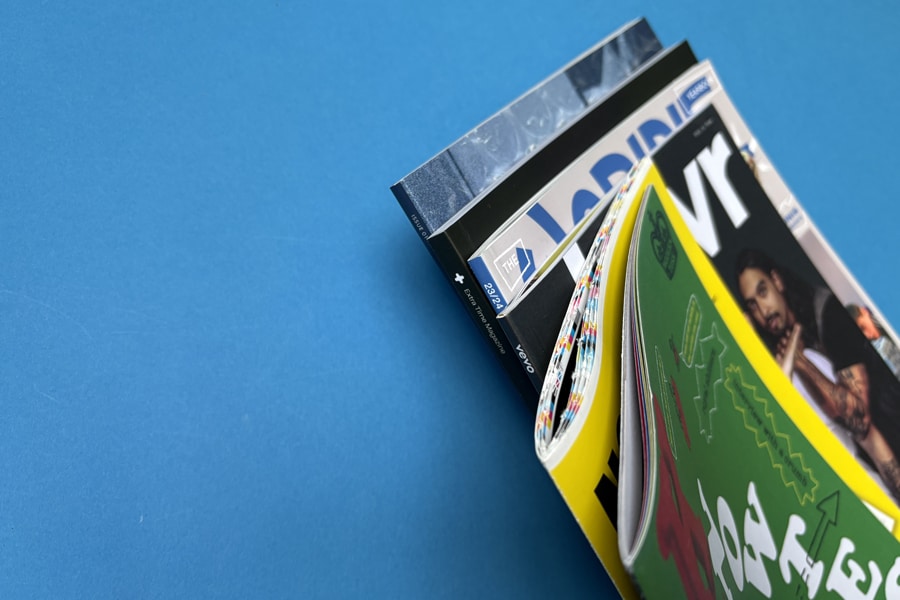
Choosing the right binding option becomes crucial for a professional finish to your publication. From saddle-stitching and perfect binding to wire-o options, there's plenty to choose from depending on your budget, page count, and style preference.
Here are key differences between the three:
Once you've chosen the right binding—whether it’s the sleek, premium feel of perfect binding or the classic simplicity of saddle stitching—the rest should be smooth sailing. With Ex Why Zed's Magazine Services, we make the process hassle-free. Just upload your PDF, and our team will handle the technicalities, from free file checks to lightning-fast delivery. Need a quick turnaround? We can have stapled magazines delivered to you in just 3 days.
Plus, with instant pricing, free paper samples, and hands-on support from real people, you’re not just getting a print service—you’re getting a partner who makes your magazine look and feel its best.
The thickness or length of a magazine can vary broadly from an eighth of an inch to as much as three centimeters. This primarily depends on the page count, which varies greatly among different publishers and issues. It is worth noting that a magazine's dimensions significantly impact its readability, portability, and production costs.
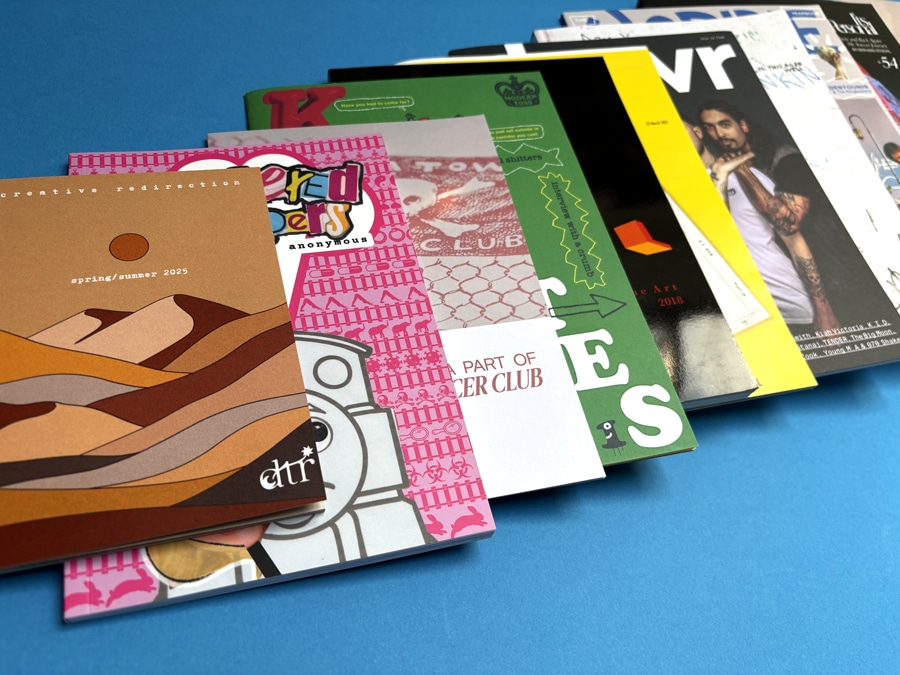
Your magazine deserves to stand out—and Ex Why Zed makes that happen with a full spectrum of format options. Whether you’re going for a sleek portrait design, a bold landscape layout, or a modern square finish, we offer the flexibility to match your creative vision.
Every magazine is printed with sharp detail, vibrant colors, and professional binding. With us, you’re not just picking a size—you’re choosing how your story is told. Contact us now and make your magazine worth publishing!
Magazines are a powerful medium for sharing information, sparking creativity, and engaging readers. While often overlooked, a magazine's size and format are crucial elements that influence how readers experience its content. Magazine companies offer a variety of sizes, from compact digests to expansive broadsheets, tailored to specific content and audience needs.
Selecting the right size and format also allows publishers to craft a visually compelling product that resonates with readers. While understanding standard sizes is a great starting point, modern printing technology offers endless customization possibilities to achieve a professional look. We hope this blog helps you navigate your magazine’s journey, whether refining your format or exploring new dimensions.
Typically, a standard magazine cover in the US measures 8.5 inches by 11 inches. But for publications like Vogue, it usually measures 9.5 inches by 12 inches.
The optimal size choice should ideally depend on the type of content, the target audience, production costs, and the physical convenience for readers to carry and read.
The most common print magazine sizes generally include 8.5×11 inches and 5.5×8.5 inches. The European standard measures often use formats like A4, A5, and A6.
A magazine's size is measured by its width and height in inches or millimeters. These measurements are typically established in the initial stages of design and layout.
When it comes to zine production, the binding method you choose can significantly impact the final product's look and feel. One popular method for binding zines, particularly those with a higher page count, is perfect binding. This method offers a neat, professional finish that can elevate your zine's aesthetic which can command a higher cover price and allow you scope for more content within. In this post, we'll delve into the world of perfect bound zines, exploring the design considerations, binding process, and technical tips you need to know.
Perfect binding is a method commonly used in Bookazine printing and for zines with 36 pages or more. This method involves trimming the inside pages into a text block, roughening up the left-hand edges, applying glue, and then wrapping a continuous cover around the text block. The result is a neat, professional-looking zine with a flat spine.
Perfect binding offers several advantages that make it an appealing choice for zine creators. You've all seen Little White Lies, Shooter and Moof, they are all perfect bound. Firstly, it provides a more high-end, professional look compared to other binding methods. This can be particularly beneficial if you're creating a zine for a professional context or if you're aiming for a more polished aesthetic.
Secondly, perfect binding allows for more illustrations, photography and poetry self-publishing and creative writing to be packed in. While wire stitching is suitable for zines with up to 40 pages, perfect binding can accommodate monster zines with up to 300-400 pages. This makes it an excellent choice for more substantial zines or Bookazines.
Finally, perfect binding creates a neat bind, with less bounce and curling on the inside pages compared to wire stitching. This can enhance the reader's experience, making your zine easier and more enjoyable to read. If your spine is 4mm or thicker there's even room to add your title, issue number and attention grabbing call to action.
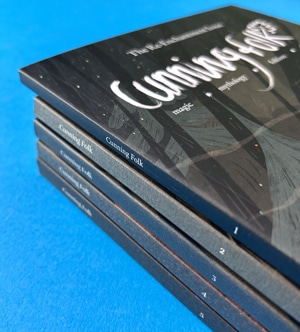
When designing a perfect bound zine, there are several key considerations to keep in mind. One of the most important is the page count. Perfect binding is best suited to zines with a minimum of 36 pages. This ensures that there is enough thickness in the text pages for the glue to hold effectively. Attempting to perfect bind a zine with fewer than 36 pages can result in the pages pulling out, as there is not enough glue to hold them in place.
Another crucial consideration is the cover weight. Because of the amount of glue used in perfect binding, the cover needs to be resilient. We recommend a minimum of 200gsm for the cover. Anything thinner, and the glue may seep through, compromising the binding's effectiveness.
When you come to create your perfect bound zine cover file, check out our dedicated page with super helpful video and illustrated guides plus downloadable InDesign templates to save you some head-scratching.
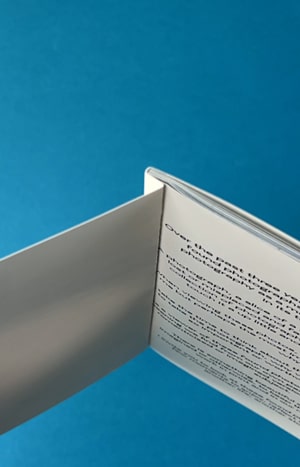
Finally, it's important to allow for a 6-8mm hinge on the front and back cover. This ensures that the cover opens neatly and falls flat again. You'll also need to allow for 6-8mm being lost on the inside front cover and the inside back cover, as well as the first 6-8mm on the spine side of your first and last text page. This area will be obscured by the glue, so it's important to keep any important content at least 10-12mm away from this side of the page.
You can actually see on our example here that the text starts too close to the 6-8mm area and it is very nearly hidden.
Text pages onto 120gsm Uncoated
36pp to 44pp Text = 3mm spine
(ie: if you have 40 pages then you need a 3mm spine)
48pp to 60pp Text = 4mm spine
64pp to 72pp Text = 5mm spine
76pp to 88pp Text = 6mm spine
92pp to 100pp Text = 7mm spine
104pp to 116pp Text = 8mm spine
120pp to 132pp Text = 9mm spine
200pp Text = 14mm spine
Text pages onto 130gsm Silk
36pp to 40pp Text = 2mm spine
44pp to 56pp Text = 3mm spine
60pp to 76pp Text = 4mm spine
80pp to 92pp Text = 5mm spine
96pp to 112pp Text = 6mm spine
116pp to 128pp Text = 7mm spine
200pp Text = 11mm spine
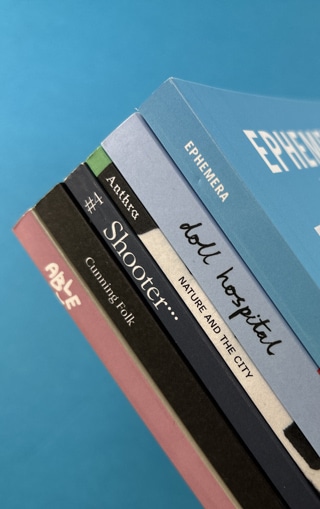
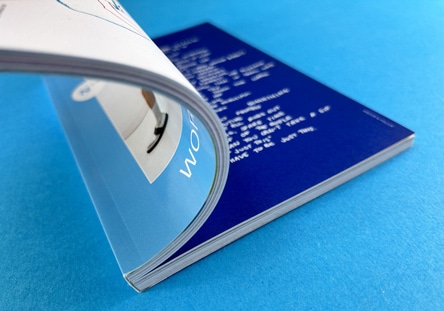
When you come to set up the inside pages, lets keep the key information at least 5mm from the trim edges of the page. On the spine side of the page, 2-3mm tends to be slightly obscured unless the reader really force the pages flat. This isn't a user friendly way to read a book so best to start content on the spine side of the pages at least 8-10mm in. Our image here shows the spine gutter area and you can see the central section is tough to fully read.
This is an example of a superb page layout for a perfect bound book. The text is neatly organised into columns which sit well within the constraints of the page's parameters. The reader does not have to work hard to read the article and it is punctuated with awesome graphics and subtle page numbers in the bottom, outer corners.

Perfect binding offers a world of possibilities for zine creators. This binding method allows for a wide range of designs and layouts, providing a canvas for your creativity and imagination. Whether you're creating a personal zine or a professional publication, perfect binding can help bring your vision to life.
For more information on perfect binding and other binding options, check out our Perfect Binding Setup Guide and our Binding Options page on our website. These resources provide detailed instructions and illustrated guides to help you prepare your zine for perfect binding.
For a visual guide to perfect bound zines, check out our YouTube videos:
The best binding for a zine depends on several factors, including the page count, the aesthetic you're aiming for, and your budget. Perfect binding is a great option for zines with a higher page count and a more professional aesthetic.
Perfect bound binding is a method that involves trimming the inside pages into a text block, roughening up the left-hand edges, applying glue, and then wrapping a continuous cover around the text block. The result is a neat, professional-looking zine with a flat spine.
You will upload your print ready pdfs to Ex Why Zed. One for the cover spreads and one for the inside pages. We will then give your artwork a preflight check and report back any issues to be ironed out. We strive for perfection in the artwork before we eve consider printing.
When it comes to binding zines, perfect binding emerges as the superior choice. This method bestows your publication with a polished, professional appearance that sets it apart from the rest. It not only accommodates a larger number of pages but also imparts a sturdy bind that stands up to the test of time and use. In contrast to other binding techniques, perfect binding presents a more refined, sophisticated aesthetic, elevating your zine to a higher level of professionalism.


Perfect binding is characterised by its neat, flat spine, its resilience and its professional, high-end appearance. This method is also recognised for its capacity to hold a greater number of pages than alternative binding techniques.
Features of perfect binding include a flat spine, a continuous cover that wraps around the text block, and a 6-8mm hinge on the front and back cover. This binding method also requires a minimum of 40 pages and a cover weight of at least 170gsm.
The two main types of binding for a zine are wire stitching and perfect binding. Wire stitching, also known as stapling, is suitable for zines with up to 40 pages. Perfect binding, on the other hand, is best for zines with a higher page count.
Perfect binding offers a world of possibilities for zine creators, providing a canvas for your creativity and imagination. Whether you're creating a personal zine or a professional publication, perfect binding can help bring your vision to life. With its neat, professional finish and ability to accommodate a higher page count, perfect binding is an excellent choice for your next zine project.
For more information on perfect binding and other zine printing options, don't hesitate to contact us at Ex Why Zed. We're always here to help you bring your creative projects to life.